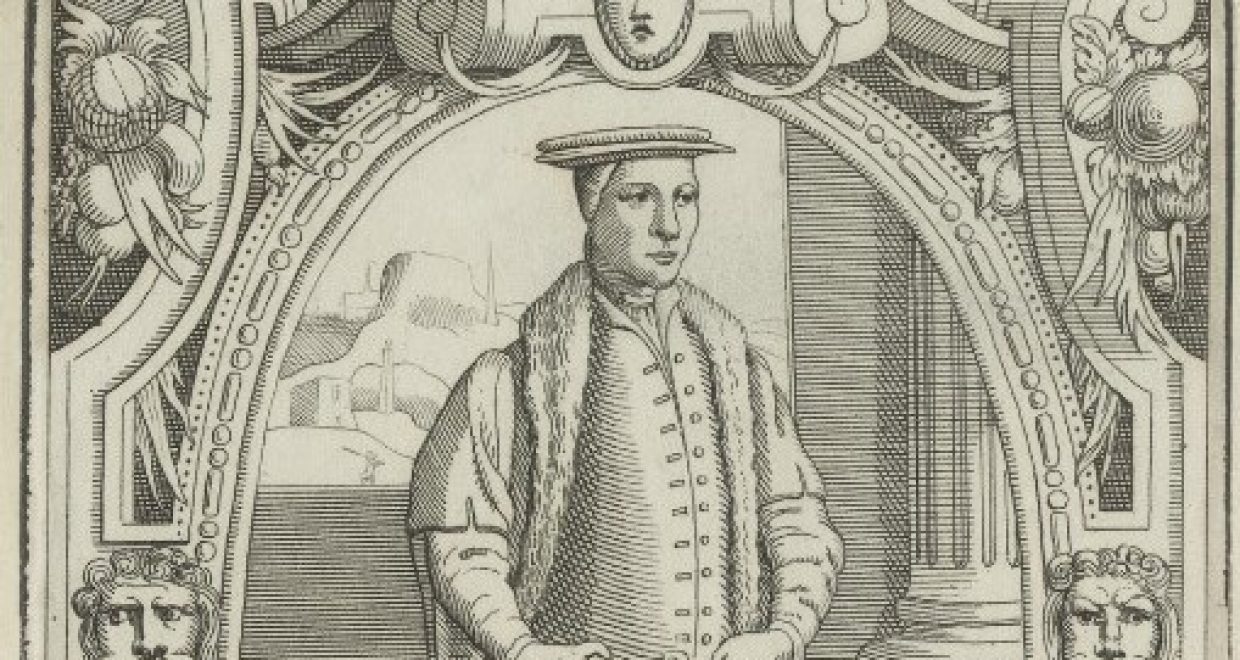Discovering a ‘new’ Tudor ballad by John Heywood
Read Jane Flynn’s full article published in the journal British Catholic History.
A few years ago, I did an internet search involving the name ‘John Heywood’, the Tudor court entertainer, poet, and musician. One of the hits was from the catalogue of manuscripts of the Durham Cathedral Library, in a description of a book of accounts dating from 1561–75. It mentioned that the account book contains a 38-stanza poem that ‘begins “When all that is to was ys brought / As all that hath byn is” and ends “Maye rest in rest aye restyngly / Amen quoth John Heywood” [John Heywood ?1497-?1580]’, with the name ‘Thomas Good at the end’. I was intrigued: was the poem by Good or Heywood? Even these short excepts seemed reminiscent of Heywood’s style, so I decided to visit the Library.
The poem, like the rest of the manuscript, is written in Elizabethan secretary hand, and I had transcribed 28 stanzas of a general nature before coming across the line ‘My Brothers three & Childerne fyve’—the same number of brothers and children that Heywood had. ‘Thomas Good’, was still a possible author, but after many hours of research I found no likely candidate, or even someone of that name who might have known either Heywood or the account book’s compiler, Francis Samwell (the poem’s copyist). However, ‘Thomas Good’ is not written beneath the poem, as an author’s name would be, but in an otherwise empty column on the same line as ‘Iohn heywood’.
Heywood was emerging as the most likely author. Since his brothers were mentioned as living, I could date the poem to before 1568, and because its contents suggest that the author is preparing for exile or death (or both), it seemed likely that it could date from shortly before Heywood went into exile in the Netherlands in 1564. Would Heywood have worked his own name into a poem that signalled an intent to go into exile illegally? It occurred to me that since the text of the poem has several close correspondences with Thomas More’s Dialogue of Comfort (a work he wrote to prepare Catholics for persecution), Heywood may have chosen ‘Thomas Good’ as a substitute for ‘Iohn heywood’.
The poem treats the parable of the worker who goes into God’s vineyard at the eleventh hour (also discussed in More’s Dialogue), and fits Heywood’s intention to go into exile in old age, on account of his faith. Its contents also fit with a report that Heywood sent a poem described as ‘a rythme declaringe his own life and nature’, to Lord Burghley, Lord High Treasurer, in 1574, in support of his plea for license to remain in exile. Francis Samwell was an auditor of the Exchequer around the time that Burghley ordered Heywood’s documentation to be re-examined. Perhaps at that time Samwell came across the poem and made his copy of Heywood’s ‘Swannys Songe’.
Read Jane Flynn’s full article in the journal British Catholic History.
Main image: John Heywood © National Portrait Gallery, London






